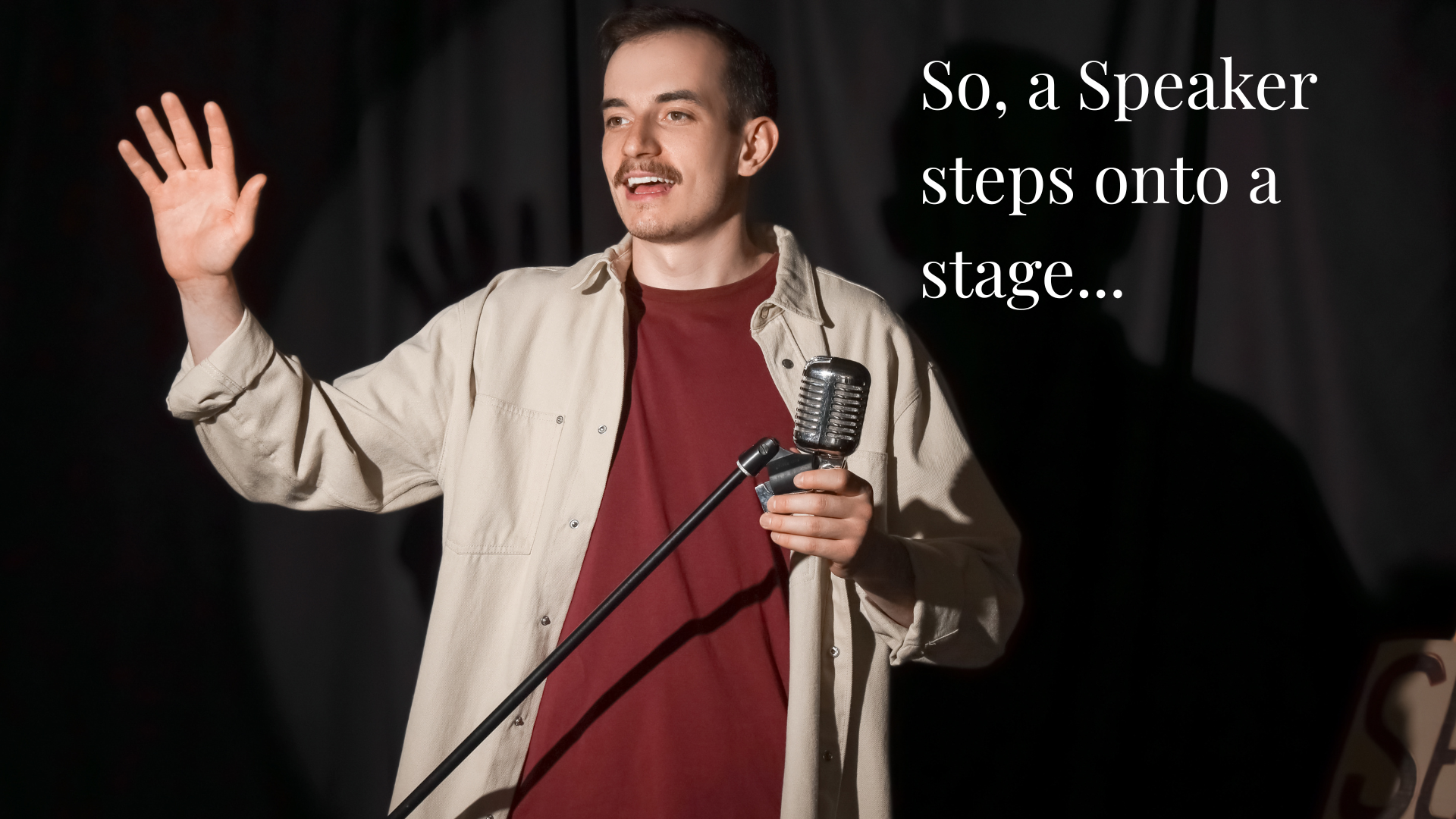So, a Speaker Steps onto a Stage...


Paula Statman, MSSW
President, Authors Speak: Speech Coaching for Authors, Experts, and Academics
Apr 30, 2025
When a comedian starts a joke with the word “So” it's classic and effective—it builds anticipation and signals that something funny is coming. The audience leans in, waiting for the punchline.
But when a speaker begins a presentation with "So..." it has the opposite effect. It comes across as a nervous habit that lowers the speaker’s credibility.
Reducing how often you use the word “So” should be at the top of your list if you are a new speaker. Record yourself and you’ll discover how much you say it. “So, I'm here today to talk about … So, my background is…”. “So, what I've found is... So, one more thing I forgot to mention...”
You might be thinking “So what?” What harm can one little word do? Plenty. If you use “So” too many times in your speech, you’ll lose the audience’s interest.
The Many Lives of "So"
- The Nervous Introducer: “So” kicks off every sentence. It quickly becomes a verbal distraction. Soon the audience is counting how many times you say “So” instead of listening to your brilliant ideas.
- The Endless Connector: Just when a perfectly good sentence should end, "So" jumps in like an unwanted party guest who won't leave. "We increased sales by 200% last quarter…So we implemented the same strategy this quarter…So we're expecting similar results…So we're pretty excited about it, So..."
- The False Concluder: “So, one last thing..." But often it isn’t one last thing! It’s a Trojan Horse filled with content you’re sneaking into your presentation. And when the audience realizes they’ve been tricked into listening longer, they’ll roll their eyes and check out.
From Verbal Crutch to Powerful Pause
The remedy is simple. Here’s how it works. Instead of mumbling “So” when you're gathering your thoughts, try saying nothing! If you worry you’ll sound unprepared, practice being silent for a second to get comfortable with it. Notice how a strategic pause doesn’t create an awkward silence. Then record yourself and listen to how much more confident you sound!
A brief pause gives you time to think and makes you look thoughtful rather than nervous. Some examples:
Instead of this verbal traffic jam: "So, today I'm going to talk about digital marketing. So, what I've noticed is that many businesses struggle with social media. So, in this session we’ll look at some solutions..."
Use pauses: "[Pause] Today I'm going to talk about digital marketing. [Pause] What I've noticed is that many businesses struggle with social media. [Pause] In this session we’ll look at some solutions..."
For transitions: Instead of: "So, moving on to our next point..." Try: [Pause] "Let’s move on to our next point..." or “My next point is…”
For conclusions: Instead of: "So, in conclusion..." try: [Pause] “The final thing I want to share with you is this.” Then conclude your speech in 2 or 3 sentences. (To elevate your speech, follow your conclusion with a memorable Closing. More on this in my upcoming article.)
The next time you're tempted to start a sentence with “So”, remember: A comedian's “So” leads to laughter. But a speaker's “So” can lead to a SO-SO SPEECH that nobody remembers.
What's your best tip for eliminating filler words? Share your wisdom in the comments.
Follow me for presentation hacks that are guaranteed to keep your audience tuned i
